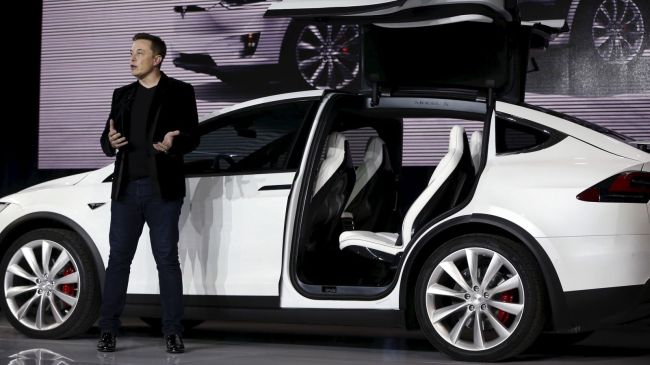그는 “100% 출력이 가해졌을 때 자동제동장치 (automatic emergency braking)가 해제되는 것은 잘못된 기능”이라고 지적하며 급발진 여부를 떠나 테슬라로서는 상당한 결함이라고 덧붙였다.
특히 업계에서는 이번 소송이 소비자 권리를 중시하는 미국에서 진행된다는 점에 주목하고 있다.
한 업계 관계자는 “한국서는 자동차 결함을 운전자가 직접 밝혀야 하지만 미국은 그 책임이 제조사에게 있어 소비자에게 유리하다”며 “원인이 밝혀지지 않더라도 중간에 합의하는 경우가 많다”고 전했다.
실제 도요타가 2009년 미국서 급발진으로 집단소송을 당했는데 2013년 16억 달러 (약 1조 9,000억 원)의 배상 및 12억 달러 벌금에 합의하기도 했다.
당시 소송을 진행했던 변호사가 이번 손씨의 변호인이기도 한 리처드 매큔 (Richard McCune) 매큔ㆍ라이트ㆍ아레발로 LLP 로펌의 파트너다.
매큔 변호사는 “한두 차량이 아니라, 비슷한 사고가 같은 차량에서 여러 차례 발생했다면, 운전자의 과실이 아니라는 강력한 증거가 된다”고 말했다.
앞서 손씨는 테슬라가 의도적으로 차량의 결함을 숨겼고, 이 때문에 소비자와 대중을 위험해 빠뜨렸다고 소장에 주장했다.
테슬라는 이에 대해 공식 입장자료에서 “조사 결과 차량 자체에 결함이 없었으며, 손씨의 과실로 드러났다”고 맞섰다.
<원본 영문 기사>
High chance for celebrity to win vs. Tesla on sudden acceleration
[THE INVESTOR] There is a fighting chance for South Korean actor-singer Son Ji-chang to win a case against Tesla Motors should the US automaker proceed with the litigation filed against it for alleged sudden unintended acceleration, experts say.
“When you look at the case, there are some technological shortcomings that are adverse to Tesla’s position,” Kim Pil-soo, an automotive engineering professor at Daelim University, told The Investor on Jan. 10.
“The Model X is equipped with a faulty safety feature of automatic emergency braking that deactivates when the car is accelerated at full power.”
“The engineering defect itself is problematic, even besides the sudden unintended acceleration problem,” Kim said. “This means the automaker has to come up with a solution, which could be a recall or other compensation measures, to fix the problem.”
He added that in the US the onus is on the automaker to prove the car is not faulty in the sudden acceleration cases, unlike South Korea where the driver bears the burden of proof. Which means, if Tesla is unable to prove that its Model X is defect-free, it will likely end up settling just to put a closure to the case.
That was the case with Toyota Motors, which settled claims of up to US$1.6 billion for a series of sudden unintended acceleration cases in the US in 2013, after failing to explain its vehicle defects.
On Dec. 30, Son filed a litigation seeking class action status against Tesla in California, after discovering that several cases of unintended acceleration involving the Model X were reported to the National Highway Traffic Safety Administration. Son claimed his Model X unexpectedly accelerated at full power while he was trying to park inside his garage, causing him to crash through the wall and into his living room, injuring himself and his son.
Tesla, however, denied that its Model X suffers from defects. Instead, it said the crash was entirely Son’s fault. Tesla also accused him of blackmail.
“The evidence, including data from the car, conclusively shows that the crash was the result of Mr. Son pressing the accelerator pedal all the way to 100 percent,” Tesla said in a statement to Reuters.
But according to Son’s attorney Richard McCune of McCune Wright Arevalo, LLP, he identified some inconsistencies with the data provided by the automaker, which he plans to address during the lawsuit.
“If it is one or two accidents that makes it tougher to prove. But when you are looking at the number of accidents that all seems to be sort of the same, it is pretty powerful proof that there is a problem beyond just the driver’s mistake,” McCune said. “But as to how we prove it, we will look through all the coding to see if there is a problem with software coding. That happened in Toyota’s case. We will look through the logs of our accident and other accidents.”
By Ahn Sung-mi (
sahn@heraldcorp.com)





![[Exclusive] Hyundai Mobis eyes closer ties with BYD](http://res.heraldm.com/phpwas/restmb_idxmake.php?idx=644&simg=/content/image/2024/11/25/20241125050044_0.jpg)
![[Herald Review] 'Gangnam B-Side' combines social realism with masterful suspense, performance](http://res.heraldm.com/phpwas/restmb_idxmake.php?idx=644&simg=/content/image/2024/11/25/20241125050072_0.jpg)

